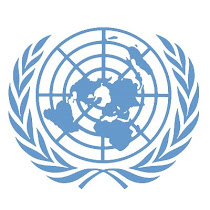About 3,6 billion of the world's 5.2 billion hectares of useful dryland for agriculture has suffered erosion and soil degradation. In more than 100 countries, 1 billion of the 6 billion world population is affected by desertification, forcing people to leave their farms for jobs in the cities.
Desertification is devouring more than 20,000 square miles of land worldwide every year. Desertification affects 74% of the land in North America. In Africa, more than 2.4 million acres of land (73% of its drylands) are affected by desertification.
Desertification takes place in dryland areas where the earth is especially fragile, where rainfall is nil and the climate harsh. The result is the destruction of topsoil followed by loss of the land's ability to sustain crops, livestock or human activity. The economic impact is horrendous, with a loss of more than $40 billion per year in agricultural goods and an increase in agricultural prices.
Climatic changes can trigger the desertification process, but human activities frequently are the proximate cause. Overcultivation exhausts the soil. Deforestation removes trees that hold the soil to the land. Overgrazing of livestock strips the land of grasses. According to a UN study, about 30% of earth's land - including the 70% of dryland - is affected by drought. Every day, about 33,000 people starve to death.
Desertification creates conditions that intensify wildfires and stirring winds, adding to the tremendous pressure to earth's most precious resource, water, and, of course, the animals dependant on it. According to the World Wide Fund for Nature, the world lost about 30% of its natural wealth between 1970 and 1995.
Dust from deserts and drylands is blown into cities around the world. Dust from Africa reaches Europe through the Pasat wind, and even reaches US cities. Dust particles, which are less than 2,5 millionths of a metre in size, are inhaled, causing health problems and have been shown to boost death rates.
Desertification can be stopped, but unfortunately is usually is brought to public attention when the process is well underway.

Deserts are encroaching cities. Sahara dunes tower over Nouakchott, capital of Mauritania. Just 5,000 years ago, the Sahara was covered with grasses and shrubs.



























